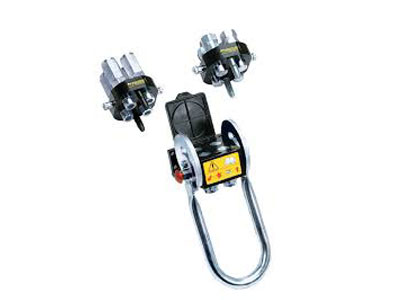What Is The Working Principle Of Single Acting Pneumatic Actuator?
Key Takeaway
A single-acting pneumatic actuator works by using compressed air to move a piston in one direction.
First, compressed air enters the cylinder through a single port, pushing the piston or diaphragm in one direction. When the air pressure is released, a spring or external force returns the piston to its original position. This type of actuator is often referred to as a spring-return actuator. Single-acting pneumatic actuators are commonly used in applications that require linear motion, such as clamping, positioning, and punching. They are cost-effective, simple, and reliable, making them ideal for various industrial applications where less complex motion is needed
Introduction to Single Acting Pneumatic Actuators
A single acting pneumatic actuator is a device that relies on compressed air to produce motion in one direction, with a spring mechanism returning it to its original position. This design is widely appreciated for its simplicity and efficiency in achieving controlled movements.
The actuator operates in a linear or rotary motion, depending on its configuration. It is often used in systems where only one directional force is required, such as opening or closing a valve. The spring’s role in returning the actuator to its original state makes it a self-contained system, eliminating the need for additional air supply for the return stroke.
This simplicity reduces maintenance requirements and makes single acting pneumatic actuators a cost-effective solution in many industrial setups.

How Compressed Air Generates Motion
The core principle of a single acting pneumatic actuator is converting the energy of compressed air into mechanical motion. When air is introduced into the actuator, it exerts pressure on the internal components, causing movement in a specific direction.
Step-by-Step Process:
Air Supply: Compressed air is delivered to the actuator via a control valve.
Pressure Build-Up: The air fills a chamber inside the actuator, creating pressure against the movable component, such as a piston.
Motion Generation: The pressure causes the piston to move, generating mechanical motion that performs a task, such as opening a valve or moving a lever.
The motion is smooth and controllable, thanks to the regulation of air pressure and flow. This allows for precise operations, even in demanding industrial environments.
The Role of a Spring in Returning Motion
What makes single acting pneumatic actuators unique is their reliance on a spring to return to their original position. This eliminates the need for compressed air for the return stroke, simplifying the system.
How the Spring Works:
When compressed air is released or the pressure drops, the spring inside the actuator decompresses.
This decompression pushes the actuator back to its starting position, resetting it for the next cycle.
Advantages of a Spring Mechanism:
Failsafe Operation: In case of air supply failure, the spring ensures the actuator returns to a safe default position.
Cost Efficiency: Reduces air consumption, as air is only used for the forward stroke.
The spring’s role is critical in applications requiring safety, such as emergency shutdown systems, where the actuator must revert to its default state without relying on external power sources.
Key Components of a Single Acting Actuator
Understanding the components of a single acting pneumatic actuator is crucial for optimizing its use and maintenance.
1. Cylinder: The main body where the piston moves, housing the compressed air and spring.
2. Piston: Converts the air pressure into linear motion.
3. Spring: Provides the returning force when air pressure is released.
4. Control Valve: Regulates the flow of compressed air into and out of the actuator.
5. Seals and Gaskets: Prevent air leaks and ensure smooth operation.
Each component plays a vital role in ensuring the actuator’s reliability and efficiency. Proper maintenance of these parts, such as checking for air leaks or wear in the spring, can extend the actuator’s lifespan and improve its performance.
Applications Where Single Acting Actuators Excel
Single acting pneumatic actuators are widely used in industries where simplicity, cost-effectiveness, and failsafe operation are essential.
Key Applications:
Valve Automation: Often used to open or close valves in fluid control systems, especially in industries like water treatment and oil and gas.
Safety Systems: Ideal for emergency shutdowns due to their spring-return mechanism.
Material Handling: Used in pick-and-place operations where single-direction motion suffices.
Why They Excel:
Require less compressed air, reducing operational costs.
Offer reliable performance in harsh environments.
Easy to integrate into existing systems without complex modifications.
These actuators are particularly valuable in applications where space constraints or energy efficiency are critical factors.
Conclusion
The working principle of single acting pneumatic actuators revolves around the efficient use of compressed air for motion in one direction and a spring mechanism for returning motion. This combination ensures simplicity, reliability, and cost-effectiveness, making these actuators indispensable in industrial automation and safety systems.
By understanding their components and applications, engineers can select and utilize single acting pneumatic actuators effectively, ensuring optimal performance in their operations. As industries continue to advance, the role of these actuators remains central to achieving precision and efficiency in automation.

